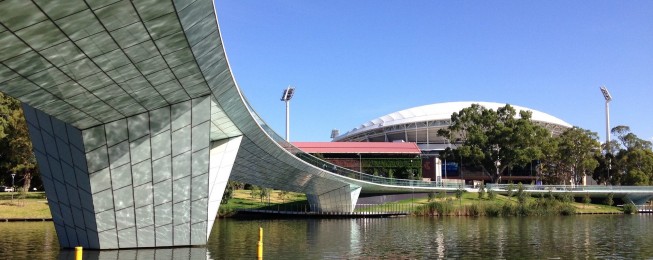
Postcard from Adelaide
Helen Poulter, IGov Team, 19th March 2018
On March 17th, South Australia (SA) will go to the polls to elect their state government and energy is dominating the campaign.
Adelaide is the capital city of South Australia. SA has the highest adoption rates of large-scale renewables and domestic DER of any of the states of the National Electricity Market (NEM). In the case of DER the State has the highest percentage penetration rates in the world with 31% of households having PV installed. As a result, SA is currently experiencing problems associated with variable generation and the historic invisibility of behind the meter DER.
The current Labor premier Jay Weatherill, has announced a 75% renewable energy target for the State by 2025 plus a 25% energy storage target, meaning that 25% of large-scale renewable generation will be co-located with storage. Labor has also pledged $100m in interest free loans of up to $10,000 to allow householders to buy PV and storage. Labor, who are the currently in power in SA, have recently joined forces with Tesla and South Australia Power Networks (SAPN) to start a Virtual Power Plant (VPP) trial. The trial will be initially for 1100 social housing properties, rolled out to a further 24,000 social housing properties and then open to the general public. It is hoped that 50,000 households will join the trial over four years.
The Liberal Party are promising greater interconnection between states, a $100m subsidy for loans up to $2,500 for domestic battery storage and funds for demand response trials.
Nick Xenophon of the SA-BEST political party has promised to hold energy providers to account if the average electricity prices in the state are not reduced by 20% within the next two years. He has also announced that he would create a not-for–profit retailer to provide cheaper energy for households with incomes up to $75,000.
The question for the networks, the market operator and the regulator is how these promises will work on a practical level. Currently one third of domestic households in SA have PV installed and 50% of SA’s large-scale generation capacity is met by Variable Renewable Energy (VRE). If a significant percentage of solar owners also install batteries the worry for the networks and the Australian Energy Market Operator (AEMO) is how to provide the reliability needed to operate securely and cost-effectively within the NEM.
The need for inertia is the current key problem for reliability due to the increasing amounts of large scale renewable generation. Inertia is needed within the electricity system as it provides a small amount of time to respond to the disruption of grid frequency caused by changing loads or generation. This means that the system operator can use this time to react, by using frequency response mechanisms, such as FCAS (Frequency Control Ancilliary Services) to prevent power system failure. Currently this inertia is provided by the fossil fuel generators as they burn coal or gas to produce steam, which in turn spins a large turbine to produce electricity. This spinning provides mechanical inertia at a constant rate. Mechanical inertia cannot currently be produced in the same way by wind turbines due to their variable output, and not at all by PV. The Australian Energy Market Operator (AEMO) are having to curtail variable wind generation at times of high wind and solar output. AEMO then use gas synchronous generation to provide the inertia. Battery storage is able to provide some synthetic inertia capability but the time taken to dispatch this capability, even though it is fast, is still not currently fast enough to provide grid stability. There are positive trials underway by ElectraNet, the SA transmission network, to use synchronous condensers – an old technology which uses a small amount of power to produce the spinning needed to provide constant inertia – instead of relying on fossil fuel generation.
The historic lack of visibility of DER and the absence of coordination of the charging and discharging of batteries in order to prevent network failure is also causing concern for the distribution networks and AEMO. Currently, as part of the Renewable Energy Target (RET), PV installers provide the Clean Energy Regulator with small-scale technology certificates. Although these do not give a comprehensive guide, it does mean that the networks and AEMO have a good idea of the scale and density of domestic and small commercial PV installations in each area. There is no such scheme in place for batteries meaning that these are essentially invisible. This means that AEMO does not know how many of the PV installations will be discharging into the grid or whether they will be using the generation to charge batteries. Currently AEMO have an idea of patterns of generation, based on weather predictions, and consumption, based on historical records, and can coordinate the demand capacity needed. If there is no idea of scale and density of battery installations, within and across States as there is for PV, then there is uncertainty around how much capacity for demand will be needed. The RET is due to end in 2020 which means that any small-scale (<100kW) PV installations after this date will also be invisible to the networks and AEMO.
It is for this reason that VPP trials are so welcome. As well as the upcoming trial mentioned above, AGL, one of the ‘big 3’ generators and retailers in Australia, and South Australia Power Networks (SAPN) have also been running their own trials. VPPs give the networks and AEMO visibility and control, and owners of solar and storage extra value. The questions arising from this are then (i) who should own and run the VPP? and (ii) how does this fit with current regulation for ownership and consumer protections?
There is also the problem of consumer trust. Does the consumer trust either the networks or the retailers enough to allow them partial control of their installation? The major point of these questions in SA is that this is not an issue for the future but is an actual pressing real-time problem. The technology is available, and is being used in the market, but the rules and regulation for ownership and consumer protection are struggling to keep pace.
Related Posts
« Previous Innovation and Governance for Future Energy Systems Global Insight : 20th March 2018 Next »







